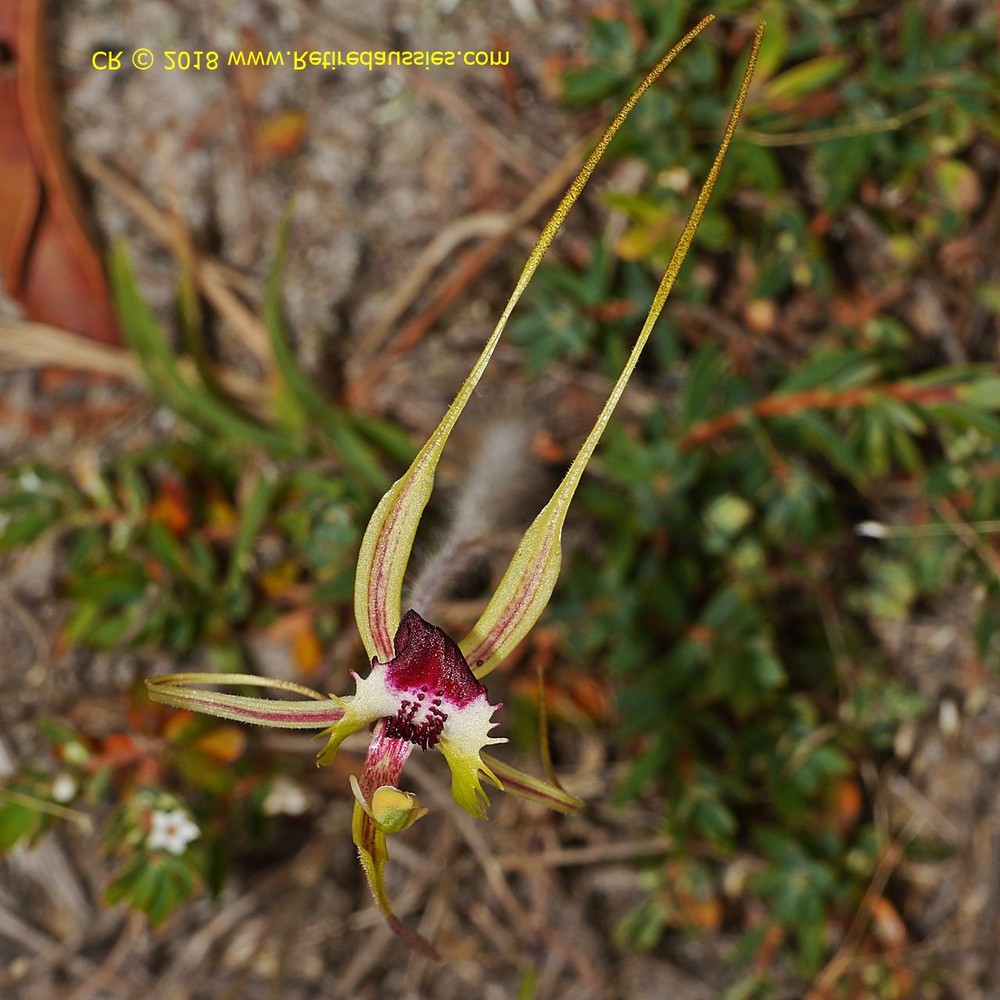Green-comb spider-orchid
(Caladenia dilatata)

Description
Caladenia dilatata, commonly known as the green-comb spider-orchid and as koolin by Aboriginal people of the Coranderrk area, is species of flowering plant in the family Orchidaceae and is endemic to south-eastern Australia. It has a single leaf and a single yellowish-green flower with reddish stripes and occurs in Victoria South Australia and Tasmania. It is similar to C. necrophylla which occurs in south-east South Australia and to C. concinna from southern New South Wales. Caladenia dilatata is a terrestrial, perennial, deciduous, herb with an underground tuber and a single leaf which is 60–130 mm (2–5 in) long, 6–8 mm (0.2–0.3 in) wide with red spots near the base, but which is often dried by flowering time. A single yellowish-green flower with reddish stripes is borne on a flowering stem which is 200–350 mm (8–10 in) tall. The sepals and petals have brown or yellowish, densely glandular, thread-like tips 5–15 mm (0.2–0.6 in) long. The dorsal sepal is erect, 35–50 mm (1–2 in) long and 2–3.5 mm (0.08–0.1 in) wide with a drooping tip. The lateral sepals are 35–50 mm (1–2 in) long, 3–3.5 mm (0.12–0.14 in) wide near the base then tapered to thread-like tips. The lateral sepals are parallel to each other or crossed. The petals are 25–35 mm (1–1 in) long, 1.5–2 mm (0.06–0.08 in) wide and curve downwards. The labellum is 13–17 mm (0.5–0.7 in) long and wide, green near the base, grading to white with a dark maroon tip. There are four or five pairs of thin teeth 4–5 mm (0.2–0.2 in) long on the sides of the labellum and four densely crowded rows of calli up to 1.5 mm (0.06 in) long in the centre of the labellum. Flowering occurs from November to January. Green-comb spider-orchid occurs in Victoria, the south-east of South Australia and Tasmania. It grows in coastal or near-coastal heath and in open forest further inland. Caladenia dilatata was first formally described in 1810 by Robert Brown from a specimen collected at Port Dalrymple at the mouth of the Tamar River near Georgetown. The description was published in Prodromus Florae Novae Hollandiae. The specific epithet (dilatata) is a Latin word meaning "widened" or "expanded". A similar species, the endangered C. tensa which occurs in New South Wales, Victoria and South Australia, was formerly included with C. dilatata.
Taxonomic tree:







